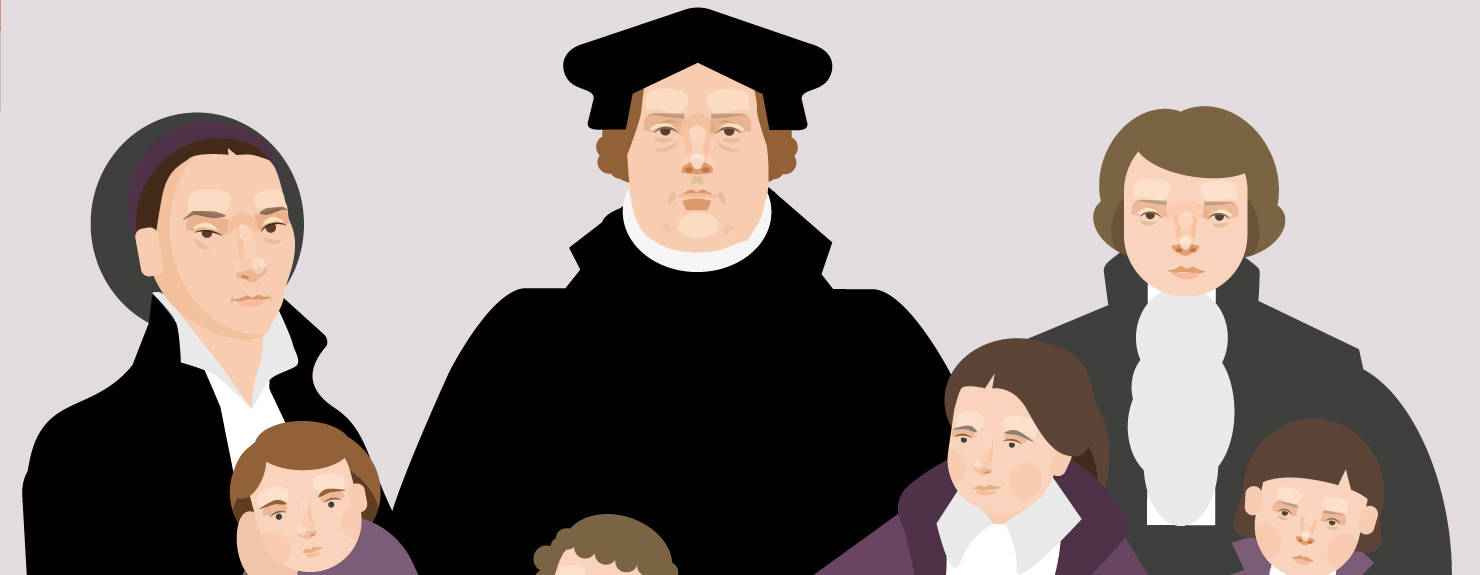Our Cultural institutions Page highlights our ongoing support of museums and cultural institutions with free accounts and access to tools. In Cultural Heritage Spotlight, we’ll explore museums and cultural institutions who are using 3D technology to bring new life to their collections. Today’s blog post features Here I Stand, a German project composed of 4 museums who share their 3D-Scans and make them downloadable.
We live in a globalized world. As a counter reaction, museums have become places of the authentic, where visitors want to see the “Original Object” and to get in touch with the realness of history.
At the same time, information rapidly becomes fluid and available worldwide through the internet. This influences museums with their collections and how they do exhibitions in the future. The possibility of 3D-scanning and printing museums objects changes the way these institutions work.
Outside of Germany, several big museums already scan their objects and make them accessible to the public with a Creative Commons License. On Sketchfab you can find e. g. objects from the British Museum, the RMN-Grand Palais in France and the Minneapolis Institute of Art. The Smithsonian uploads scans to their own site. To the best of my knowledge, the museums in Germany have not discovered this option yet.
For us, the project “Here I stand…“ it was an adventure, to be the first German project to make their 3D-Scans public and downloadable with a Creative Commons License. We are the State Museum of Prehistory Halle, the Luther Memorials Foundation of Saxony-Anhalt, the Deutsches Historisches Museum and the Foundation Schloss Friedenstein Gotha. These cooperating museums are organizing, with the support of the Foreign Office of the Federal Republic of Germany, three big exhibitions with “real” objects in the United States in 2016. The exhibitions will tackle the substantial topic of the Reformation, which will be a big theme in Germany in 2017.
Reformation could be described as process of empowerment. People, who used to require direction and interpretation by priests to experience the word of God (as the majority could neither read nor understand Latin), could now hear the Bible read in their own language and gain a better understanding of it themselves. If you think further, you could think of Protestantism as a DIY-movement. We took this DIY idea and thought that it would be nice to empower smaller institutions or even private persons to make their own exhibition on Martin Luther and the Reformation. This DIY-exhibition is called “#HereIstand. Martin Luther, the Reformation and its Results”.
As of today, you can find a digital exhibition on our website. Here you can see online-infographics on the history of Reformation (for example here, here or here), about the Life of Martin Luther and also about the role of women in the Reformation period. There is a lot of to discover – all in all, we have produced 30 infographics for the internet. If you want, you can even download these graphics as a poster for free, print them out by yourself, hang it on the wall and have your own poster-exhibition about Reformation period. If you would like the exhibition in German, we can help you with printing and you can easily order the posters on our site.
But an exhibition without real objects would be boring. So we decided to scan 20 exhibits and make them available for download on Sketchfab. Thanks to Lukas Fischer and Robert Noack we have now wonderful scans from four Museums, who have never used “3D-Scans” like this before. We used photogrammetry and Autodesk to produce the models. I’m a historian so I understood only a little about the technique behind it – but what I knew was enough to try to convince my colleagues that it is a good idea to scan objects. And the Sketchfab-Crew was really helpful in making these scans public!
But there is still a lot of persuasion needed. People working in a museum are very afraid that somebody could steal “their” objects, and stealing here also means forgery. This is understandable, museums collect originals and not copies. The debate about using 3D-scans in museums has only just begun in Germany. So far we have reached the point, where people can be interested in seeing the “Original Object” if he or she has seen the 3D-scan on the internet. For more on this, we should all read Walter Benjamin’s “The Work in the Age of Mechanical Reproduction” again.
The Reformation was made possible in part due to of a media-revolution: The new technique of book printing made it easy to spread the word. You no longer had to copy pages of books by hand, as they could now be printed with the printing press. Today we see the world changing rapidly because of the internet and because of social media. You no longer need a printed newspaper any more as you can find your news in the twitter-stream. This gave us the idea to use the Social Media intensively: Our Social Media Site is up and running and we hope that all the small exhibitions about the Reformation period will connect via Facebook, Twitter or Instagram. With this people who hear about 3D-scanning for the first time or about making an exhibition yourself will easily find good examples. For this we use widely the Hashtag #HereIstand. So feel free to share your thoughts and ideas with us!
Thanks for sharing, Here-I-Stand and Robert!
Robert Kluth is a curator at Internationales Lutherprojekt USA 2016, you can follow him here.
If you are part of a cultural institution, get in touch with us at museums@sketchfab.com to set up your free business account.


